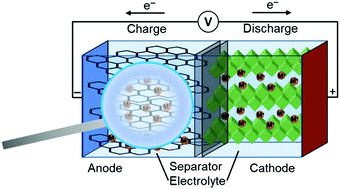Electroanalytical methods and their hyphenated techniques for novel ion battery anode research
Abstract
The physicochemical properties of the metal-ion battery anodes display a key role in the full behavior and electrochemical performance of energy storage devices. Novel ion battery anode materials (NIBAMs) are attracting a growing attention due to the capacity limitation of the classic graphite anodes, which provide low specific- and rate-capacity, and safety issues. Nevertheless, the electrochemical performance of NIBAMs such as the capacity, cyclability, rate capability, voltage profiles, and safety are strongly dependent on the structural and morphological evolution, phase transformation, ion diffusion, and electrode/electrolyte interface reconstruction during charge–discharge cycling and storage. In-depth understanding of the electrochemical process of NIBAMs is essential for optimizing their preparation and application conditions, and exploring NIBAMs. Traditional electroanalytical methods, such as charge/discharge, cyclic voltammetry, and electrochemical impedance spectroscopy are utilized to research the capacity, resistance, rate capability and cyclability of NIBAMs. Recently, rapid progress and development in hyphenated techniques by coupling with X-ray, electron, scanning probe, optics, neutron, and magnetic techniques have provided extensive insights into the nature of structural evolution and morphological changes of NIBAMs, and electrode/electrolyte interface. In this review, a comprehensive overview of both classical electroanalytical methods and advanced electroanalytical hyphenated techniques for studying the NIBAMs is provided.



 Please wait while we load your content...
Please wait while we load your content...